















|
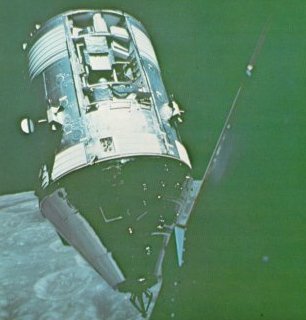
| The eyes of geochemical sensors peer through an opening in the sides of Apollo 15 CSM Endeavour. The instruments gave us broad-scale remote sensing of the lunar surface, allowing data from sampies collected on the surface to be correlated across major areas of the Moon. Included were precision cameras and spectrometers that sensed x-rays, gamma rays, infrared radiation, and the chemical ions in the ultrathin lunar atmosphere. Apollo 15 cameras supplied much imagery used to plan our Apollo 17 exploration. |
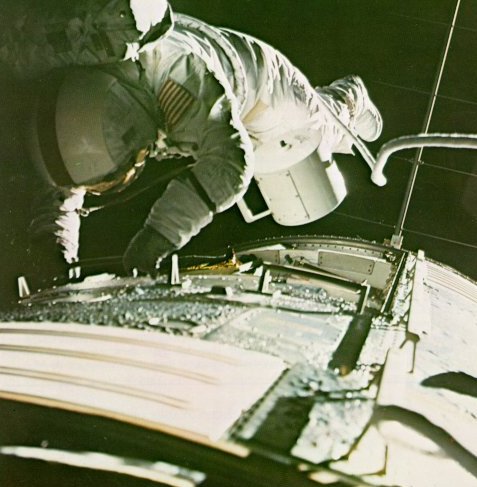
|
| Adrift between the Earth and the Moon, Ron Evans retrieved the film canister of the mapping cameras on the day after Apollo 17 left lunar orbit. His space walk lasted an hour, and resulted in the successful retrieval of data from three experiments. Ron's oxygen was fed from the spacecraft through the umbilical hose, with an emergency supply on his back. I was in the open hatch to help in retrieval, which was necessary because the service module would be jettisoned before we reentered the Earth's atmosphere. |
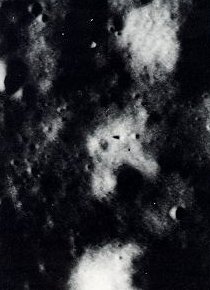 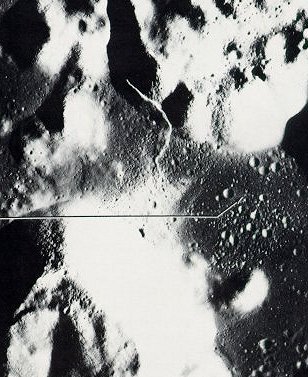
|
|
Apollo 17 photographed itself in the frame at right from its panoramic
camera, which shows the valley of Taurus-Littrow after the landing of
Challenger. The landing point (see inset at left) is revealed by
a bright spot, produced by the effects of the descent-engine exhaust.
A reflection from and shadow of the LM are also visible in
high-quality prints. The panoramic camera has an absolute resolution of
about 1 meter in best prints. Detailed analysis of this panoramic photograph indicates that the light-colored avalanche, and many of the craters on the valley floor, are probably the result of the impact of material ejected some 50 million years ago from the crater Tycho 1300 miles to the southwest. Such orbital data have been invaluable in expanding the context of our interpretations of samples and data that were returned from explorations on the surface. |
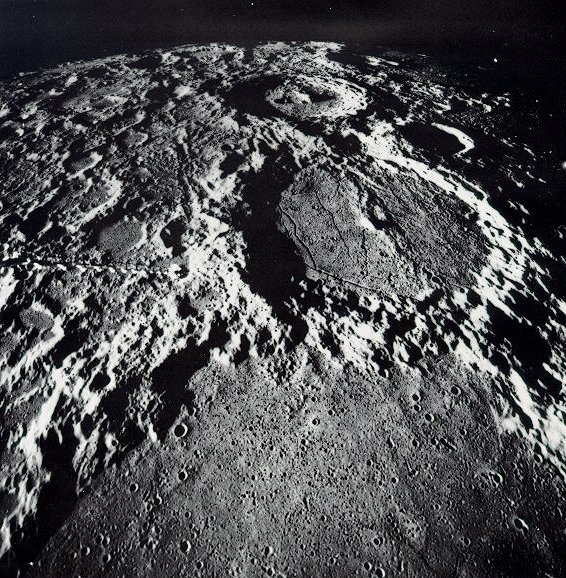
|
| A landing site not visited, the crater Alphonsus is shown in this Apollo 15 mapping-camera picture. A point near the right edge of the crater floor in this southward-looking view was once the leading candidate for our landing site in Apollo 17. However, the need for greater geologic and geographic variety resulted in final selection of Taurus-Littrow instead. Our regret is that both could not have been explored. |


